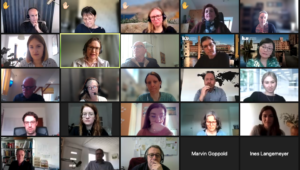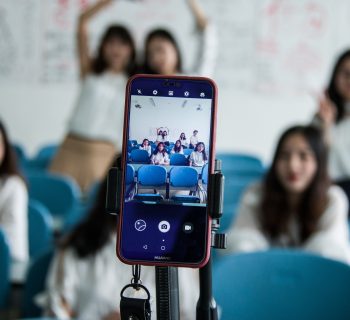 Conferences play a large role in the work life of researchers. And, like everything else, the conferences ground to a halt with the Covid 19 pandemic, only yo quickly bounce back online, especially after we discovered the wonders of Zoom.
Conferences play a large role in the work life of researchers. And, like everything else, the conferences ground to a halt with the Covid 19 pandemic, only yo quickly bounce back online, especially after we discovered the wonders of Zoom.
Of course we are all zoomed out now with too many online meetings. But what of the conferences. Perhaps the most interesting feature of the online conference circuit, apart from the fact that many reduced their prices from the previous mouth wateringly high fees, was that some did attempt to innovate in form and pedagogic approach. Organisations like Alt[C experimented with how online conferences could become more inclusive and more participate. Other organisations, for instance Jisc and AMEE - the international Association for Medical Education - have set their conferences in immersive virtual worlds. Of course the social side of conferences is important and is not so easy to transform online. I greatly enjoyed an Alt-C karaoke evening, though I lacked the courage to contribute myself. The meet a random person feature at lunchtime at another conference seemed less successful.
With the cancellation of the European Conference on Educational Research, due to have been held in September last year, I tried to persuade them, in particular the Vocational education and Training network, VETNET, into organizing an online happening. But to no avail, The time was too short, there was a lack of appropriate technologies and probably of expertise. But much has changed. The last two days VETNET has been holding its biannual Crossing Boundaries Conference, to which I made a presentation. But when the details of how the conference was to run came out last week I was surprised to see that they had largely copied the format for when attendees were physically present. The conference was divided into keynote sessions held in plenary sessions and three to four parallel paper sessions. The instructions were strict, cameras must be turned on in plenary sessions as it would be rude to the speakers to do otherwise, although it was allowed to turn cameras off to save bandwidth in the parallel presentations. Each session has a facilitator and a 'supporter' as well as a chairperson. Each presentation should be 15 minutes long followed by 15 minutes of discussion. And so on. I was skeptical that such a traditional format could work online. And I was wrong! Everybody respected the 'rules',much better that in normal VETNET sessins when speakers have a terrible habit of overrunning. As a result there was mush more, and better quality, of discussion than at previous events I have attended. Keeping strictly to the half hour rule, meant it was possible to move between the breakout rooms to listen to individual presentations (there were three to a session) that I particularly wanted to hear. Perhaps most strangely, participants returned from coffee breaks early. Perhaps one factor in ensuring people turned up promptly was the decision not to record the sessions.
So my conclusions. Strangely the traditional conference format transforms very well into online events. Perhaps key to it is a lot pf planning beforehand and good communication with participants. And Crossing Boundaries was brilliantly organized.








